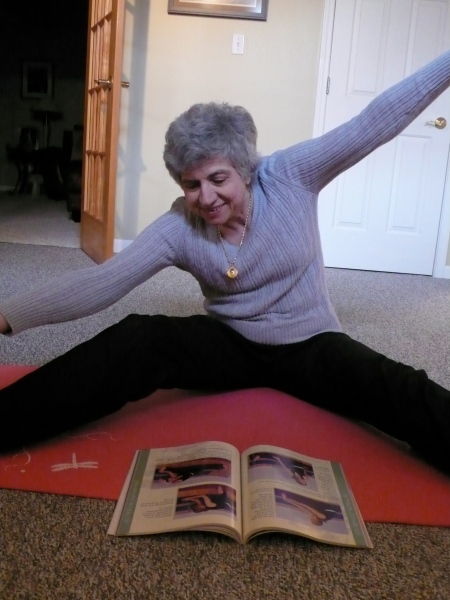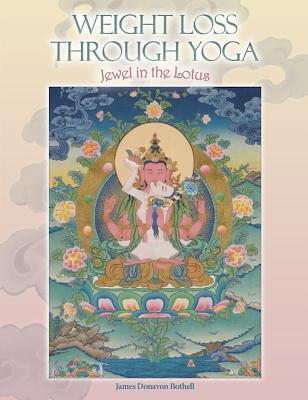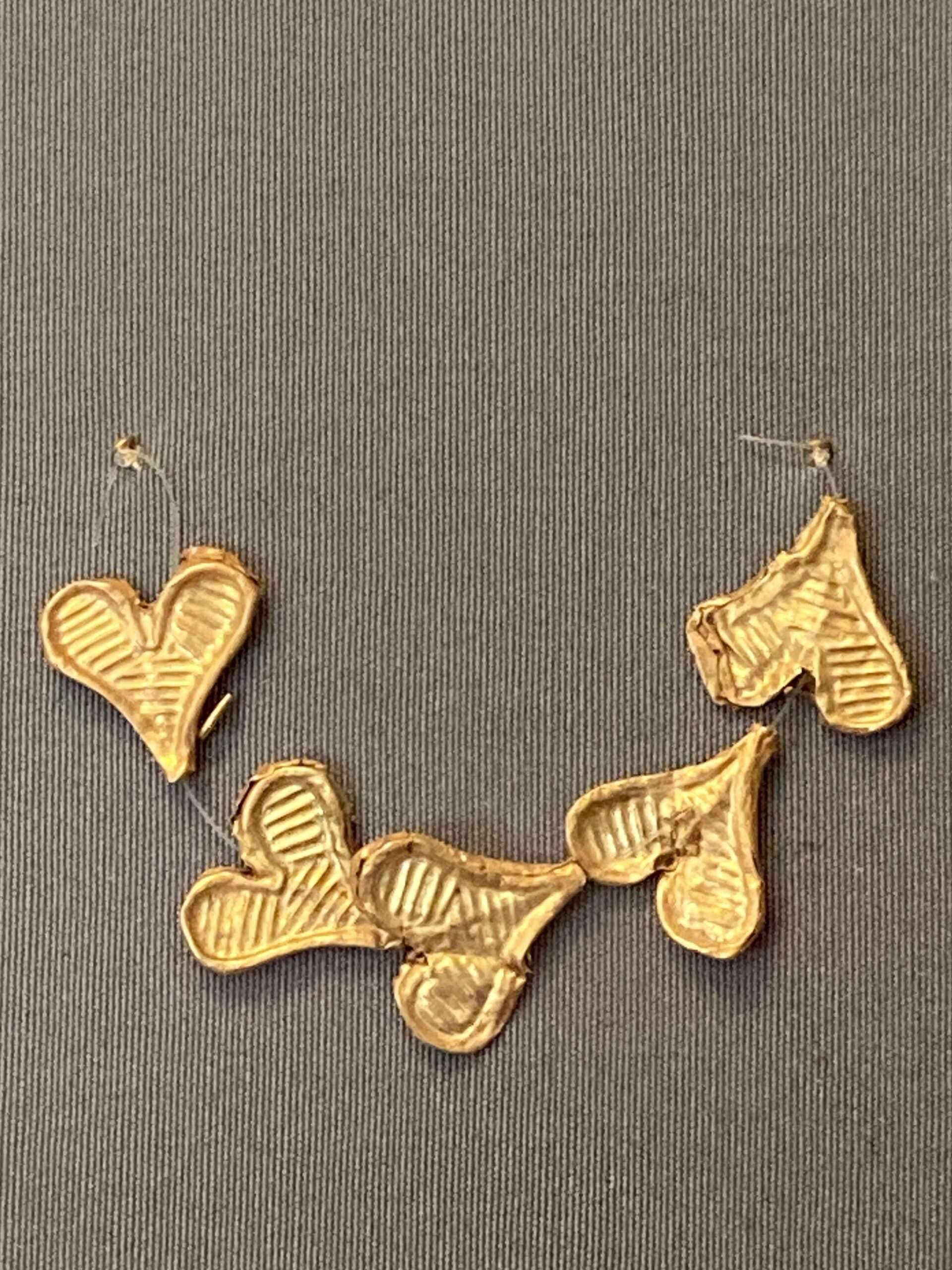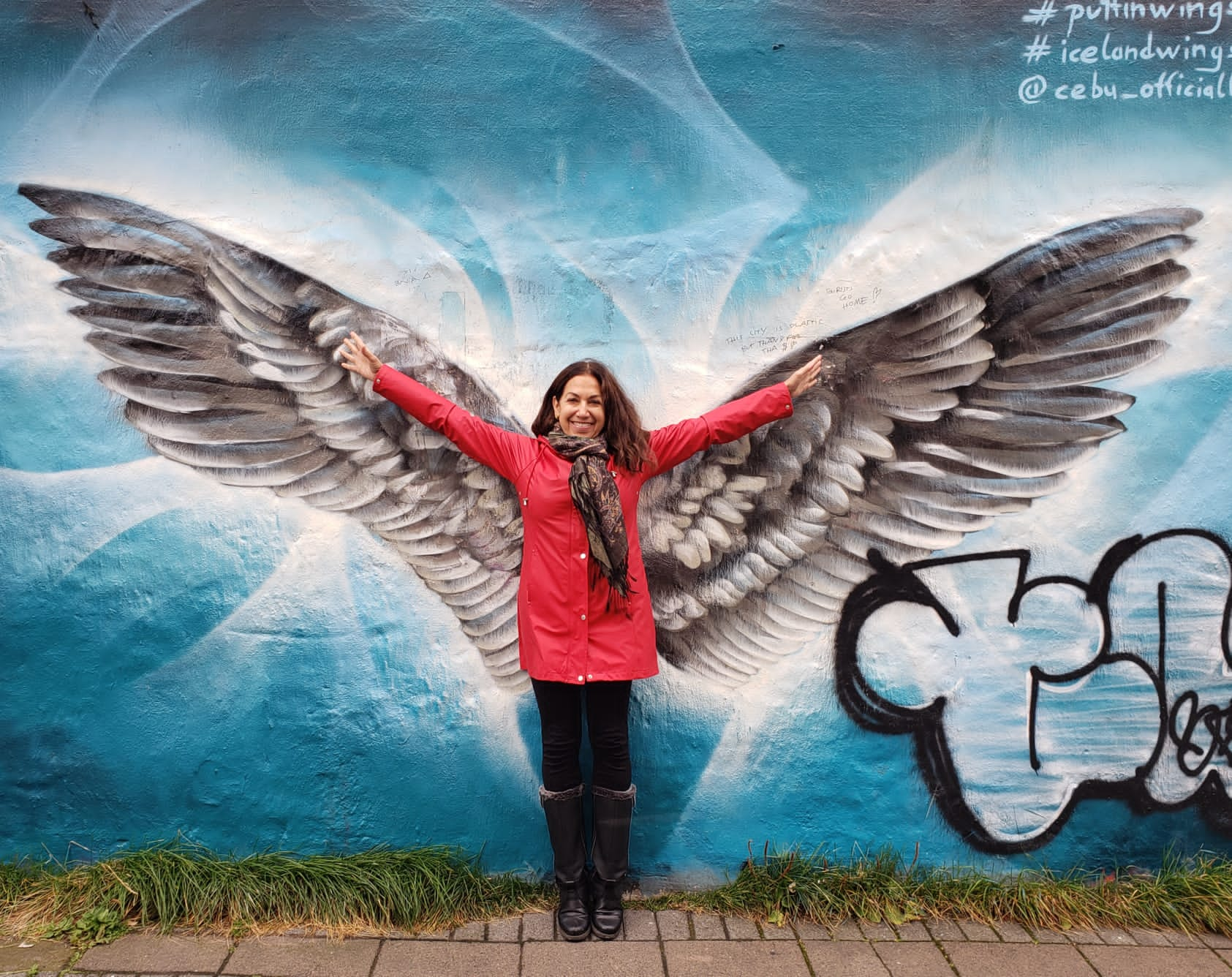Just before leaving for Thanksgiving, Don Bothell gave me a few copies of his recently published yoga book to give to my sisters. They were all very appreciative, though my sister Toni was the most “super-thrilled” because as she said, “OH, I could read the pictures and do yoga.” Toni cannot read or write, but she can certainly “read” pictures, do yoga, and she loves it! Toni does yoga twice a week: once a week at her Adult Day Care center and once a week with Nora.
On Saturday, I interviewed Don about his book entitled Weight Loss Through Yoga: Jewel in the Lotus. On a side note, this was the first formal interview I’ve ever conducted and it was really fun. Listening to the recording as I transcribed Don’s words to text, I thought I could have a new career as an interviewer!
Congratulations on your book, Don! What inspired you to write the book, Weight Loss Through Yoga?
I’ve done yoga for a number of years and I came to realize that a large number of people are being denied access to yoga because in our country we mainly treat yoga as a form of exercise, so people who are very heavy may feel a regular yoga class does not accommodate them. While in yoga class, I saw a largely overweight person in class struggling to get into postures and noticed the teacher could not devote the necessary time to help that person.
Yoga really isn’t just a system of physical exercises. It’s much much more. The physical asanas are just one aspect of yoga. I feel that people who have spinal cord injuries and can’t move at all could use the true science of yoga to grow and realize their full complete selves.
What are some of the basic premises of the book (basic claims, aims, the main points)?
The main premise is that yoga is accessible to everyone. In the book we introduce yoga using some physical movements, but mostly we use meditation, visualizations, and breathing techniques to achieve our goal of weight loss.
Being overweight is caused by an imbalance in the body. How frustrating it must be to be a heavy person in our culture and to try all the popular techniques such as dieting, hypnotism, or going to the gym to work out! The thing is, this doesn’t work for everyone. What we are doing in our culture is, rather than treating the root cause of the extra weight, we are treating the symptoms of being overweight.
Yoga gets down to the causal level. When there is an imbalance in the body, it can be expressed in several ways. It can be expressed by extra weight, pain, or disease. The same techniques we use in the book for overweight persons can be used by everyone to bring oneself into balance and to create overall good health.
Yoga allows several means of readjusting the metabolism. There are some overweight people who eat very little and some thin people who eat voraciously. For people who are heavy, their metabolism isn’t operating sufficiently and the fuel they are taking in isn’t being burned by the body but stored as fat. Ironically, the more overweight the person, the better these yoga techniques (meditation, breathing, asana) work.
The book was designed so it can be used by anyone. In the beginning of the book, I ask the person to do a Morning Ritual involving movement, breathing exercises, and focused meditation, all of which takes 20-30 minutes. This ritual will affect the participant right away, so the technique is immediately reinforcing.
The beauty of yoga is that it is a holistic experience, so by participating in the Morning Ritual, the person’s whole outlook for the rest of the day will be dramatically improved. Taking out 20-30 minutes out of each day will actually allow the participants to gain time because of increased energy and ability to be more efficient in all they do.
Who is this book for? Who did you have in mind when you wrote this book?
I wrote the book specifically for people who are overweight because it is such a growing problem in our culture. Being overweight is the main and major health crisis in the USA. However, the book is helpful to anyone interested in learning and practicing the holistic techniques described within.
Tell us about the cover.
The cover is a picture from a Tibetan wall hanging. The image depicts the Buddha of Compassion and his consort. This image seemed appropriate because compassion is what compelled me to write the book.
This book is beautifully illustrated. Tell us about the photos.
I’m a retired commercial fisherman and the photos were done by my former fishing partner, Bill Wickett, whose second career is photographing art. Bill’s wife, Cecelia Wickett, is an artist and teaches figure drawing at Bellevue Community College. She did all the line drawings. The postures were modeled by my niece, Marlow Mercer (and me). My friend, Michelle Savelle, a graphic artist, did the book’s layout design.
Your book has many visualizations for meditation. Tell us more about visualizations and how they work.
The yogi believes that our thoughts, our ideas, and even our dreams are real. The visualizations used in the book focus attention on certain parts of the body from an energetic approach, which beneficially affects the chakras and the function of the endocrine glands.
Yoga does not contradict the way Western medicine views the body, but it also looks at the body at an energetic level, the Energy Body, the part that animates the body. There is constant energy flowing through the body. The energy flow should run unimpeded. Wherever there is an obstacle to the flow of energy, there is an imbalance in the physical body resulting in pain, disease, and/or being overweight. Energy runs through the body using channels. Along the main channel are the endocrine glands and energy junctions called chakras. The chakras nourish the endocrine glands which control all of our body functions -metabolism, growth, mood- via chemical signals.
Yogis believe energy follows attention. It’s real simple to experience: Normally we are not aware of our toes, but by putting attention there, we can feel the energy in our toes. It is the same with the visualizations. Via visualizations, we focus attention on the different chakras, the energy centers, and that attention creates more energy on the area of focus, resulting in balance and restoring balanced function to the endocrine glands.
There are unimaginable numbers of relationships of balance going on in our bodies. Our bodies are always trying to maintain health. The body will maintain balance on its own if it is not being obstructed from doing that. So with the yoga and visualizations, we are allowing the body to self-correct.
How has writing the book affected your life?
It’s been a really positive experience. I’ve learned a lot about yoga and weight loss. I’ve learned a lot about myself. You know, I hadn’t thought about writing a book until seeing the situation that motivated me and that was seeing the young woman next to me in class who wasn’t able to keep up and was probably not going to come back to class. I just couldn’t stop thinking about it. I started thinking about yoga and weight loss and taking notes. I actually felt compelled to write this book. Once I started working on it, it was like the book sort of came together on its own. I almost feel like I am a functionary in writing this book. It feels as if there was a higher power involved and I was a tool to write the words down on paper.
Tell us more about yourself as a yogi.
I’ve done yoga for a number of years. In a sense, I‘ve always been attracted to yoga. My first introduction to yoga was in college when some friends showed me some yoga postures. Later, when I was a commercial fisherman, I was in a small town in Alaska and no one there did yoga. I started reading books on it and would meditate on my own. The strongest part of my practice from the time I was 20 was the breathing exercises. I would do the asanas, but I also did lots of pranayama (breathing) and meditation.
Later, when I moved to Seattle, I started taking classes. I intuitively knew all along that yoga was for me. I was surprised by how complete the practice was.
I’ve been fortunate to have had good teachers. The first year I did yoga, I lost 35 pounds. I didn’t even think of myself as overweight, though I did put on some weight over the years. By nature, I’m a stockily built person. As a fisherman, I worked really hard and ate big meals. When I no longer was a fisherman, I didn’t work so hard anymore, but I still had the same appetite, so the extra weight came. It was after joining my yoga class in Seattle and losing weight that I realized I had gotten in touch with some part of myself and that my body had started to come to its more complete balanced form.
As a yogi, I embrace yoga as a wonderful gift that gives meaning to life. Yoga helps give a sense of purpose and helps us to understand our place in the universe. It helps me to live a whole life and gives meaning to my life.
Your book is dedicated to your first and most influential teacher, Marie Svoboda. She has long since retired and is now elderly. I was so touched by the story you told me of when your book was published, you looked her up, found her, and brought her a copy of your book. Can you talk about that? It’s an incredible story.
First of all, I’d like to talk about Marie. Marie is known as the first yoga instructor in Seattle. She was a Czechoslovakian ballerina. Her husband was in the diplomatic service and stationed in India. There she trained with the great yogi, Krishnamacharya, the teacher who also taught P. Jois, B.K.S. Iyengar, Desikachar, and Indra Devi! I feel so fortunate to have been able to learn yoga through Marie right here in Seattle.
I started doing yoga with her towards the end of her career. She was already in her 70’s, but she was beautiful! I remember one time hearing the young girls in the class talking about Marie’s “20 year-old thighs”!
As a teacher, she was very precise and strict. Marie would always focus on the new students and give a lot of attention to them. She was so precise and insistent they do things the right way that a large percentage of these new students never came back! I have yet to meet another teacher like Marie who could diagnose the human body the way she did. She lived her yoga. She shared this wonderful teaching gift she had that changed many lives and she did this until she was in her 80’s.
After I published my book, I found Marie in an assisted living home and brought her roses and a copy of my book. When I went to see her, she was in the day room with all the other residents. She’s in her 90’s now and was one of the most elderly people in the room. She was sitting on a couch and looked like she was asleep. The person who managed the facility took me over and said, “I don’t know if Marie will recognize you or not.” He told me she no longer speaks. We walked up to her and he gently woke her. She looked at me with recognition and smiled! I said, “Hi, Marie. I’ve come to see you. I think about you every day and about all the things you taught me. I think about you with love every day. I wrote a book and dedicated it to you.” Then I sat next to her on the couch and we went through the book together. “See, Marie, this posture? You’re the only person I know who teaches this posture.” And I reminded her of the details she had taught me about various yoga postures so many years ago. While we looked at the book, Marie was really engaged and would look at me and smile and put her hand down on the book and would look at some of the pages more intently than others.
After we were done looking at the book, Marie put her hand up to my ear and whispered, “Thank you.”
Tell us what you are hearing from readers who are using your book.
So far, everyone who is doing the technique says it’s working for them. This isn’t just for people who are overweight. I’ve had people who’ve been in chronic pain using the book and said the book is helping them, too. One of the two doctors who read the book before it was printed has been doing the Morning Ritual daily for some months now and has been losing weight. It works!
Do you have any plans to offer workshops for Weight Loss Through Yoga?
Yes, it is my hope. I envision workshops and introducing the Morning Ritual to workshop participants.
Yoga is fathomless! Every time I do yoga with other people and with different teachers, I always learn new things. Traditionally though, yogis did yoga alone. That’s the way yoga is presented in the book. I have a presented a way for a person to start the yoga practice on their own, to do the Morning Ritual, to start losing weight, gain confidence about their bodies and movements. In the middle of the book, there is a 10 minute flow series to help limber up every part of the body. The idea is that once a person gains confidence, then they can start to explore other postures and attend any yoga class if they like.
To order your copy of the book, click here.








What a nice interview. It’s good to see it is still running,
Good work, both of you!
Rick